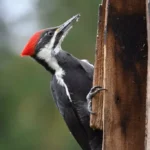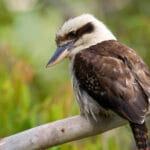Get ready to be wowed as we dive into the awesome world of birds with big, impressive beaks! From the Aussie Pelican that boasts the biggest beak ever to the Grosbeak’s nut-cracking skills, these feathered marvels have got some crazy beak adaptations that make them stand out from the crowd. Join us as we explore the fascinating world of big-beaked birds, unraveling the secrets behind their unique features and how they use those beaks to survive in the wild.
Nature’s Remarkable Engineers: Exploring Big Beaks in the Avian World
Have you ever seen a beautiful butterflies? Their diversity is astounding! The same can be said for birds, especially when it comes to their beaks. Among the feathered wonders, big-beaked birds truly steal the show. We’re talking about beaks so unique and specialized, they could put a toolbox to shame!
Consider the Australian Pelican. This bird boasts a beak that could rival a small child’s arm in length—a whopping 1.5 feet! It’s essentially a giant fishing net, perfectly designed for scooping up slippery meals. Then there’s the Sword-billed Hummingbird, a tiny acrobat with a beak longer than its entire body. This needle-like marvel allows it to reach deep into flowers for nectar, a feat other birds can only dream of.
But the magic of big beaks goes beyond their size; it’s all about the shape. Grosbeaks, with their thick, powerful beaks, could give any nutcracker a run for its money, effortlessly cracking open even the toughest seeds. Meanwhile, the Shoebill, a bird that seems straight out of prehistory, uses its massive, hooked beak like a spear to pluck fish from the water with astonishing precision.
These incredible adaptations aren’t just for show. Big beak birds play vital roles in keeping their ecosystems humming. They act as nature’s gardeners, dispersing seeds far and wide, and as pollinators, flitting between blossoms like feathered messengers. Some even shape their environment, their activities influencing the very landscape they inhabit.
Sadly, many of these remarkable creatures are facing growing threats. Habitat loss, a changing climate, and pollution all cast a shadow on their future. Protecting these birds isn’t just about preserving their beauty and wonder; it’s about safeguarding the delicate web of life we all depend on.
So, the next time you encounter a bird with a beak that seems a little “extra,” take a moment to appreciate the ingenuity of nature. These birds are living proof that evolution can create truly extraordinary tools, and it’s our responsibility to ensure these feathered marvels continue to grace our skies for generations to come.
Let’s take a closer look at just a few examples of these amazing adaptations:
| Bird Species | Beak Description | How They Use It |
|---|---|---|
| Australian Pelican | Giant, scoop-like beak | Scooping up fish like a net |
| Dalmatian Pelican | Long, strong beak | Powerful fishing tool |
| Evening Grosbeak | Deep, sturdy beak | Cracking tough seeds |
| Sword-billed Hummingbird | Long, needle-thin beak | Reaching nectar deep inside flowers |
| Shoebill | Massive beak with a sharp hook | Spearing fish with remarkable accuracy |
Unveiling the World of Big-Beaked Birds: Why Size Matters
We’ve already talked about how a bird’s beak can tell us a lot about its lifestyle, but now let’s dive into the world of birds sporting some seriously impressive beaks! These aren’t just your average beaks; we’re talking big, specialized tools that have evolved over time to help these birds thrive in their unique environments.
Beak Morphology and Function: A Closer Look
Think of a bird’s beak, or its bill, as its very own Swiss Army knife, perfectly adapted for its particular way of life. The size and shape of the beak are directly related to what the bird eats and how it gets its food. Picture a bird with a long, thin beak like a delicate probe – that’s a sure sign it loves to sip nectar from flowers. On the other hand, a bird with a broad, flat beak probably suggests it’s an expert at filtering tiny creatures out of the water. Each beak shape is a testament to the power of natural selection, crafting the perfect tool for the job.
Big Beaks in Action: Meet the Champions
Ready for some real-life examples of these incredible beaks? Let’s meet a few feathered friends with some seriously impressive hardware:
Sword-billed Hummingbird: This tiny bird takes the prize for the most impressive beak-to-body ratio. Its beak can reach over 4 inches long—that’s longer than its entire body! This incredible adaptation allows it to reach deep into flowers for nectar that other birds can only dream of.
Roseate Spoonbill: This wading bird is hard to miss with its stunning pink plumage and its most distinctive feature—its spoon-shaped beak. This uniquely shaped beak is perfect for sifting through muddy water, feeling around for small crustaceans and insects hiding within.
Shoebill: This African bird is instantly recognizable by its massive, shoe-shaped beak, which it uses to hunt for lungfish in shallow water. Imagine a beak strong enough to snatch a fish right out of the water—that’s the power of the Shoebill’s beak!
Red Crossbill: Have you ever tried to open a pine cone to get to the seeds inside? It’s a tough job, but the Red Crossbill makes it look easy with its crossed mandibles. These specialized beaks act like a pair of pliers, allowing the bird to pry open cones and extract the seeds that other birds can’t reach.
The Bigger Picture: Why Big Beaks Matter
Big-beaked birds are more than just fascinating creatures; they play vital roles in their ecosystems. They act as nature’s gardeners, helping to pollinate flowers as they flit from blossom to blossom. Some even help to disperse seeds, spreading plant life throughout their environment. Sadly, many of these magnificent birds are facing threats due to habitat loss and other human-induced challenges. Their decline could have ripple effects on the delicate balance of their ecosystems.
The Ongoing Quest for Knowledge
While we’ve learned a great deal about birds with big beaks, there’s still much more to discover! Scientists continue to study how these beaks evolved, the specific ways they function, and the intricate relationships between these birds and their environments. Ongoing research will undoubtedly reveal even more fascinating details about these remarkable creatures and underscore the importance of protecting them for generations to come.
From Pelicans to Toucans: A Celebration of Avian Giants
We’ve been talking about birds with impressive beaks, and now it’s time to meet the beak champion of the world, the one with a beak so big it could practically hold a basketball! That’s the kind of beak we’re talking about when it comes to the Australian Pelican. This bird’s beak averages a whopping 1.5 feet long – that’s longer than most people’s forearms! Why so huge? Well, pelicans are all about scooping up fish, and that giant beak is like a built-in fishing net. Talk about efficient!
But hold on, the pelican isn’t the only one with a beak that’s turning heads in the bird world. Big beaks come in all shapes and sizes, and each one tells a fascinating story about how that bird has adapted to its environment. Take toucans, for instance. Their brightly colored beaks are surprisingly lightweight, which helps them maneuver through branches while snacking on fruit. Plus, those big beaks may help toucans stay cool in hot climates – kind of like a built-in air conditioner!
Then you have hornbills, with their massive beaks that often have interesting bumps and ridges on top. These beaks are multi-purpose tools: they use them for everything from grabbing food and building nests to communicating with each other. And let’s not forget the shoebill, which looks like it’s walking around with a giant wooden clog on its face! That “shoe” is actually a powerful beak perfectly designed for snatching fish, and even the occasional small crocodile, from murky water.
Now, you might think that having a huge beak would make life pretty easy for a bird, but it’s not all sunshine and roses. Imagine trying to fly with a heavy beak – not exactly aerodynamic! Plus, those big beaks can make it tricky to keep warm in cold weather or even interact with other birds. But here’s the amazing thing: birds with big beaks have figured out ingenious ways to overcome these challenges. It just goes to show how incredible nature is at finding solutions!
Let’s recap:
- When it comes to beak size, the Australian Pelican takes the cake (or should we say, the fish?).
- Big beaks aren’t just for show – they’re specialized tools that help birds eat, stay cool, build nests, and more.
- Having a massive beak can be tough, but birds have adapted in some truly impressive ways.
So there you have it – the fascinating world of birds and their amazing beaks! Who knows what other beak wonders are out there waiting to be discovered?
The Mighty Mouths of Birds: A Look at Beaks and Their Adaptations
We’ve already talked about how important beaks are for birds, but some birds take it to another level with their massive beaks and mouths. These impressive features aren’t just for show; they’re critical adaptations that allow these birds to thrive in their unique environments. They’re like specialized tools, perfectly designed for the job of finding and eating their favorite foods.
Meet the “Big Mouth” Birds
Let’s dive into the world of some fascinating birds known for their extraordinary beaks:
Pelicans: You can’t talk about big beaks without mentioning pelicans! Their enormous beaks have a built-in pouch in their throats that expands like a shopping bag. They use this pouch to scoop up huge amounts of water and fish, then squeeze out the water, leaving a tasty meal behind. Talk about efficient fishing!
Toucans: These colorful birds are instantly recognizable by their massive, curved beaks. Surprisingly, these beaks are quite light despite their size. Toucans use them to pluck fruits from branches, regulate their body temperature, and even communicate with each other through a variety of clicks and calls.
Hornbills: With their large, often brightly colored beaks, hornbills are a sight to behold. These beaks are strong enough to break open tough fruits and even excavate nesting cavities in trees. They also act like amplifiers, making their calls louder and more impressive – especially important in dense forests.
Shoebills: These birds are both fascinating and a bit intimidating. Their enormous, shoe-shaped beaks are specially adapted for hunting in shallow water. They use their powerful beaks to spear fish with incredible speed and precision. Sometimes, they even catch larger prey like baby crocodiles!
The Link Between Beaks and Food
Think of a bird’s beak as its own personal set of cutlery. The shape and size of the beak tell us a lot about what a bird eats and how it gets its food.
Scooping and Filtering: Birds like pelicans and spoonbills have wide, flat beaks perfectly shaped for scooping up fish and other goodies from the water. Their beaks often have special structures that act like filters, allowing them to separate their food from the water.
Probing and Pecking: Woodpeckers are the masters of drilling into wood with their strong, chisel-like beaks. This lets them access a hidden feast of insects living beneath the bark. Hummingbirds, on the other hand, have long, thin beaks that act like delicate straws, allowing them to reach deep into flowers to sip nectar.
Crushing and Cracking: Finches and macaws are seed and nut-eating specialists. Their sturdy, cone-shaped beaks act like nutcrackers, generating enough force to crack open even the toughest shells.
Grasping and Tearing: Birds of prey, like hawks and eagles, have sharp, hooked beaks designed for tearing flesh. These beaks are powerful enough to rip apart their prey, making them formidable hunters.
Big Beaks: A Testament to Adaptation
The amazing variety of bird beaks, especially those big and impressive ones, illustrates just how adaptable birds are. Over millions of years, they’ve evolved to fill almost every corner of the planet, developing unique tools – their beaks – to help them thrive in diverse environments and enjoy a wide range of foods.
The Shoebill: Unveiling the Big-Beak Bird with a Killer Instinct
So far, we’ve explored several impressive birds, but now it’s time to meet the heavyweight champion of beaks: the Shoebill. This bird looks like it flew straight out of a prehistoric swamp and into our modern world. And its beak? Let’s just say it’s strong enough to make a crocodile think twice.
Imagine this: a Shoebill standing perfectly still in the swamp, like a statue. It might stay that way for hours, blending in with the reeds and water. But don’t be fooled by the stillness – this bird is locked onto its prey. Suddenly, in a blink, it strikes! The Shoebill lunges forward with surprising speed, its huge beak slamming shut on its target. It’s a scene straight out of a nature documentary, and it shows just how powerful that beak really is.
But the Shoebill’s beak isn’t just about brute force. It’s surprisingly versatile, kind of like a multi-tool for this swamp-dwelling bird. Those sharp edges and powerful muscles can snatch a slippery fish right out of the water. The hooked tip helps it grip and hold onto struggling prey. And beyond hunting, the Shoebill uses its beak for everything from preening its feathers to communicating with potential mates.
Now, you might be wondering about that nickname: “killer bird.” It’s dramatic, sure, but it’s important to remember that the Shoebill isn’t out to get us. They mainly stick to a diet of fish and other swamp creatures. The name comes from their fierce reputation as a top predator in their watery world. So, while we wouldn’t want to get on the wrong side of that beak, we can appreciate the Shoebill’s power and unique place in the animal kingdom.
If you’re brave enough, you can even get up close and personal with a bee beard. These furry creatures are covered in bees, but they’re actually quite gentle, unlike the Shoebill, which prefers to keep its distance! If you’re looking for something a little more exotic, check out the bird spider. These large spiders are native to the rainforests of South America, and they’re fascinating to watch. And if you’re really looking for a challenge, try spotting a black giraffe. These rare animals are found only in the African savanna, and they’re truly a sight to behold. If you’re interested in seeing some of the most amazing creatures on the planet, be sure to check out these links. You won’t be disappointed!
- Senior at What Age: Benefits & Eligibility Guide - March 29, 2025
- Unlocking Senior Benefits: How Old is a Senior? Your Complete Guide - March 29, 2025
- Master Russian Politeness:A Guide to Saying Please - March 29, 2025















